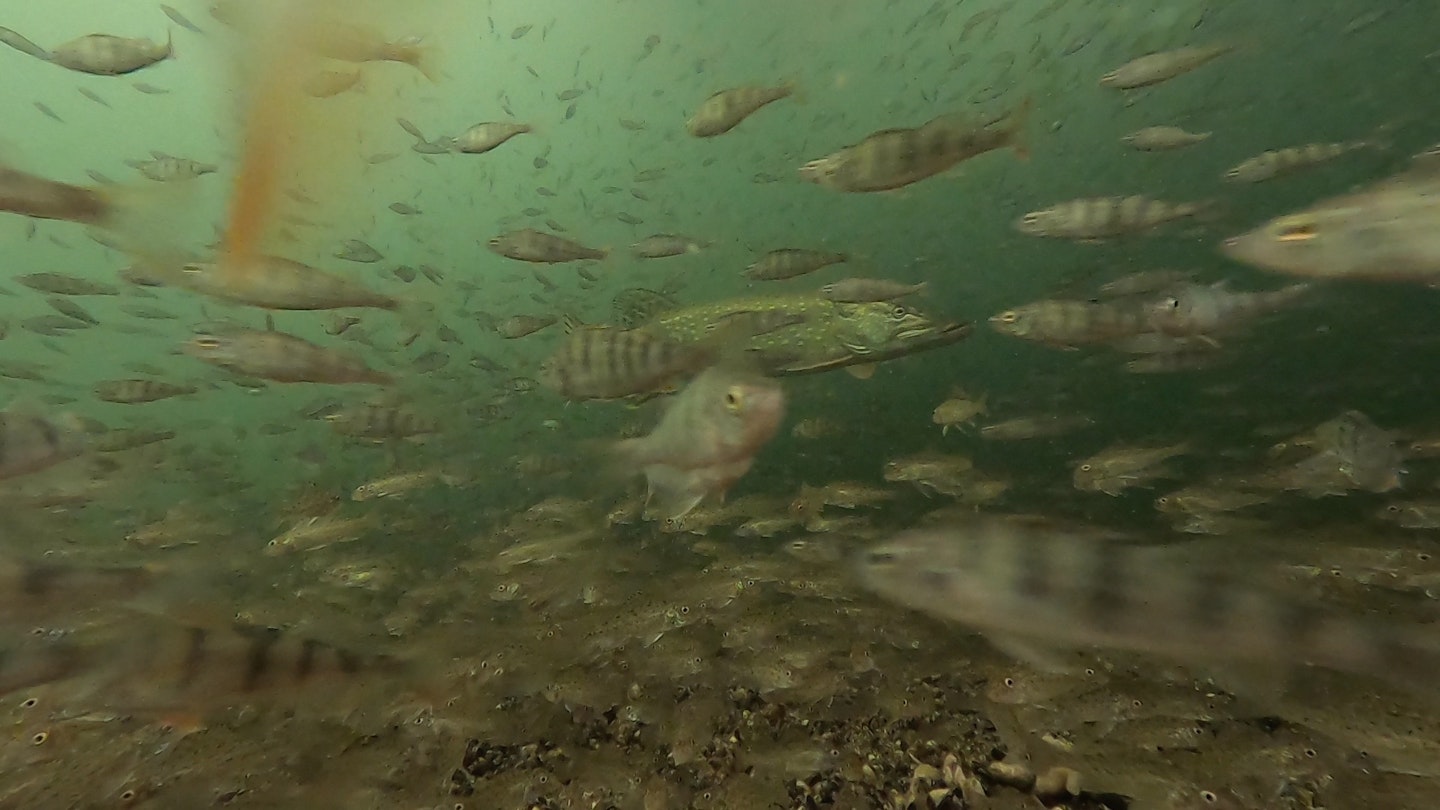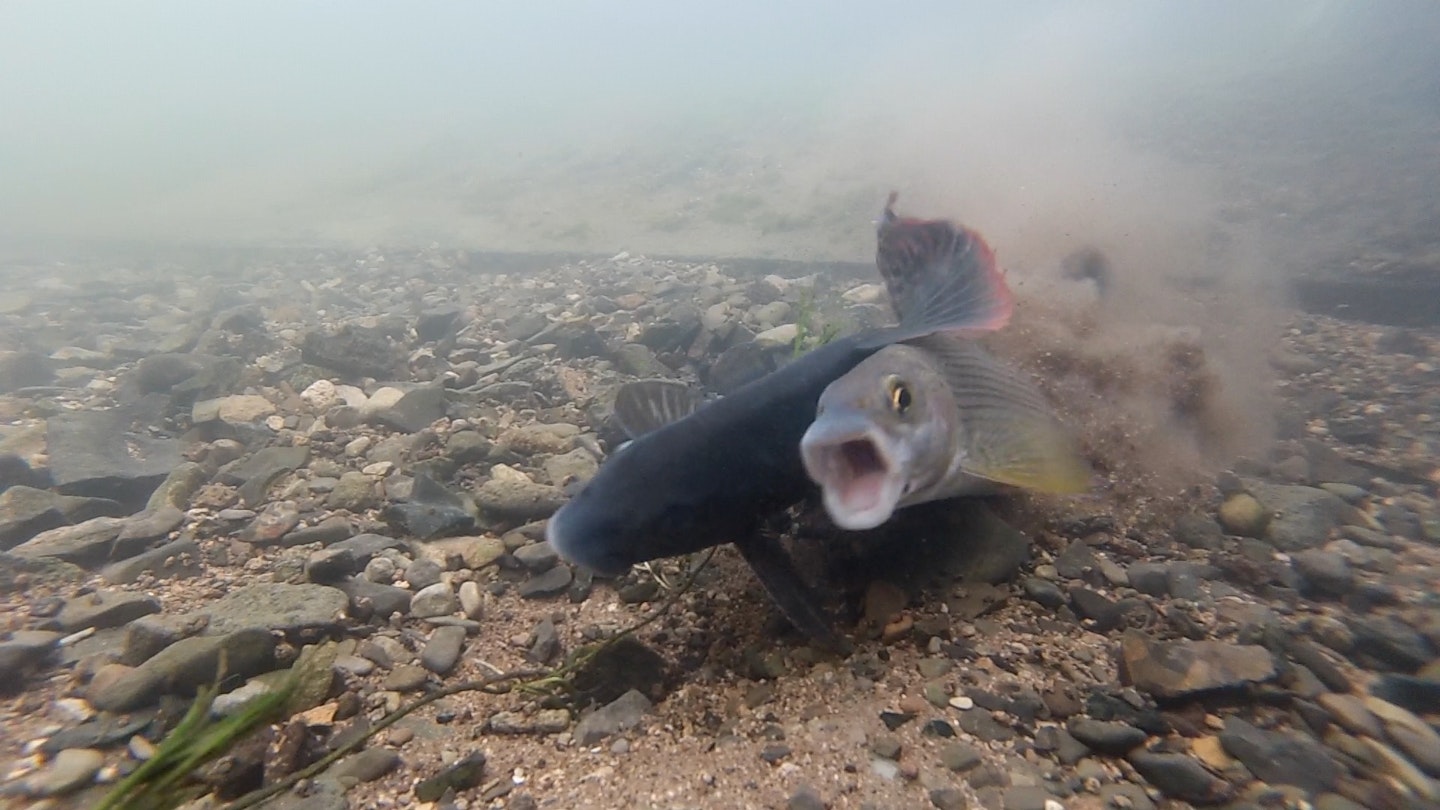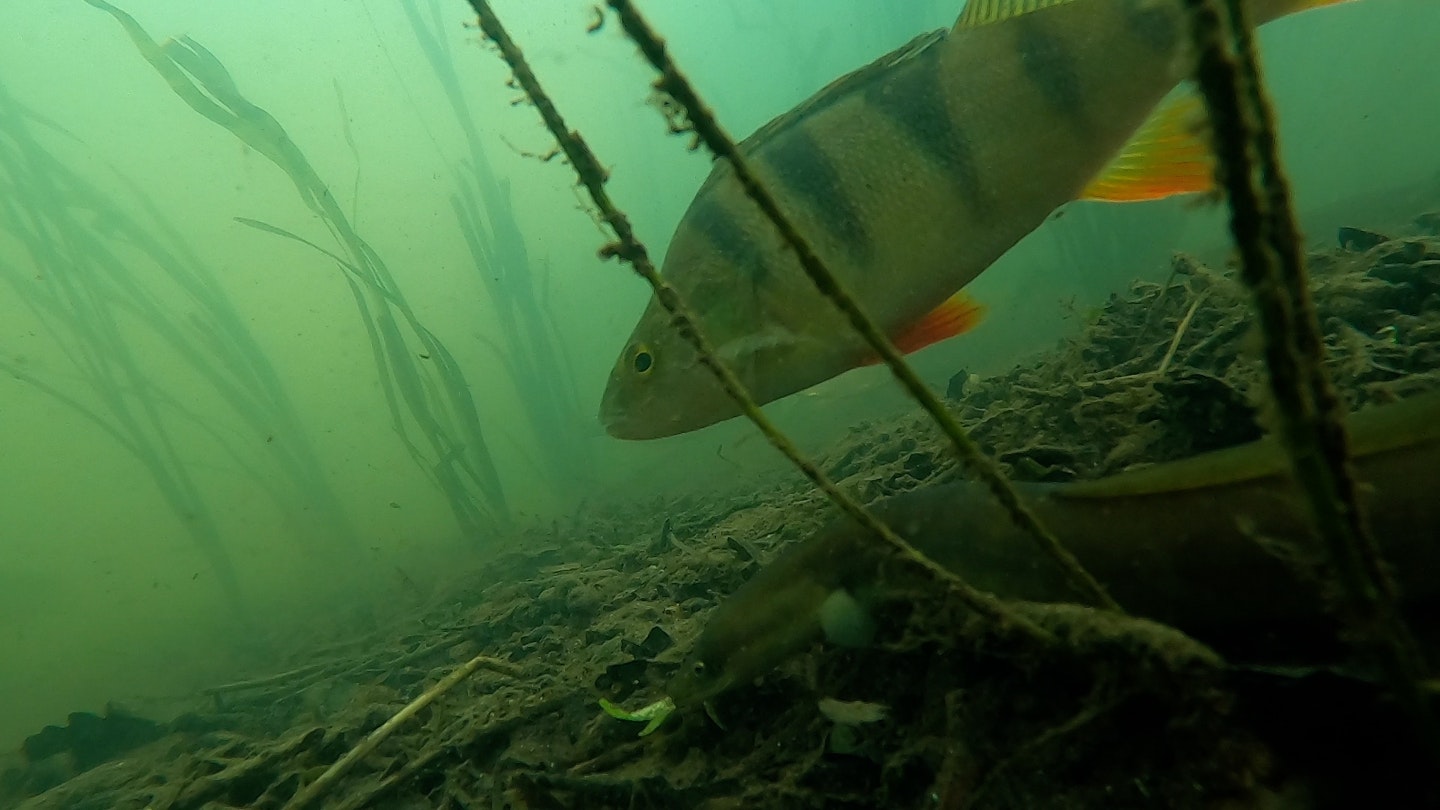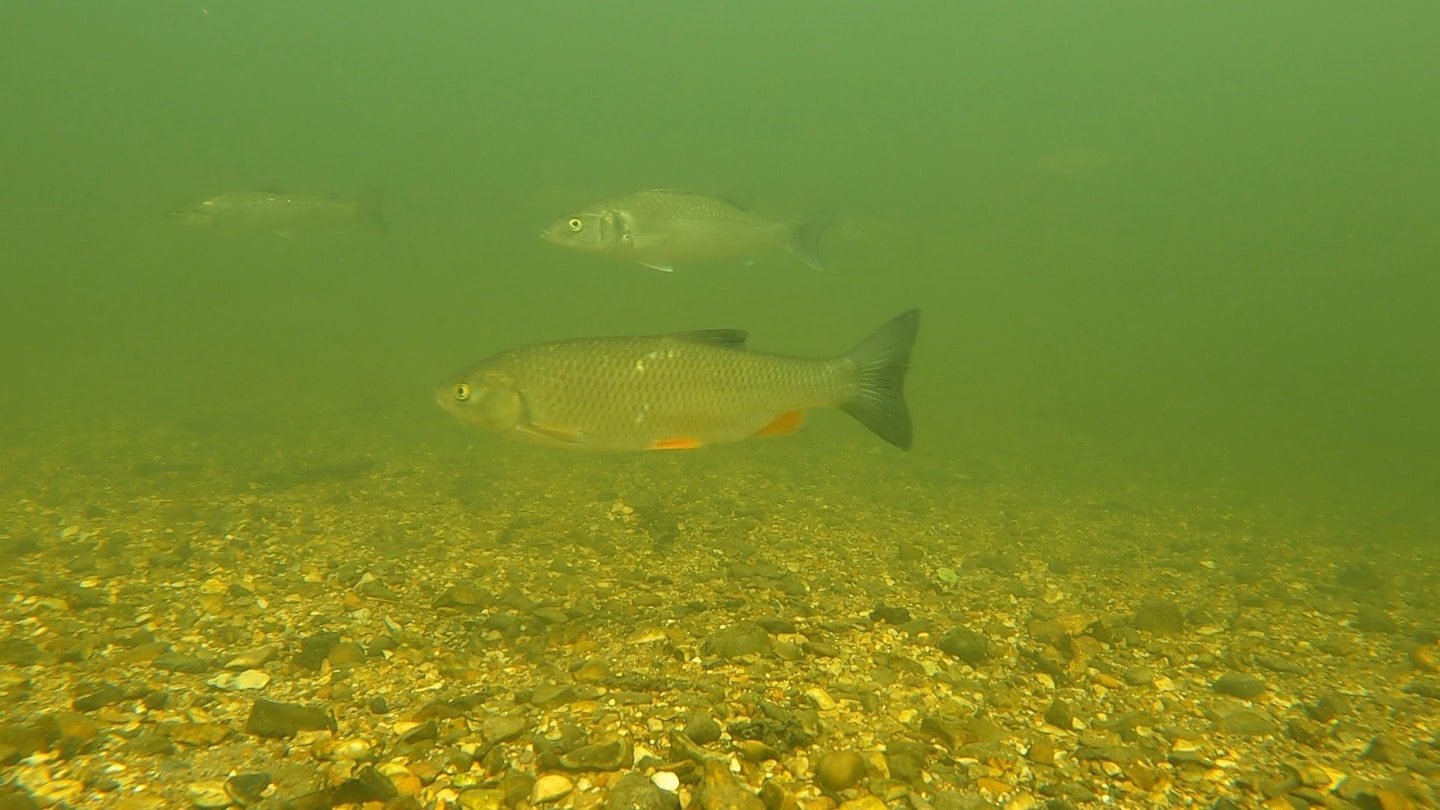To anglers, let alone the general public, so much of what goes on beneath the surface of our lakes and rivers remains unseen.
Yet thanks to pioneering film makers and increasingly affordable aquatic cameras, that picture is rapidly changing. Far from being dull and predictable animals, you never quite know what fish will do next.
Just ask Jack Perks, the underwater photographer and film maker behind the forthcoming Britain’s Hidden Fishes project. Here are just a handful of the eye-opening behaviours he’s witnessed over recent years.
Smaller fish mobbing pike
Even when faced with a pike’s rows of needle-sharp teeth, perch and chub will sometimes harry the predator in much the same way that crows will mob a buzzard they want out of their territory.
“Fish will use the annoyance factor to get rid of a pike,” says Jack. “They go for safety in numbers, and different species will even work together to buzz around a pike, albeit avoiding the pointed end of the fish for obvious reasons!
“It’s almost as if they’re giving the predator a ‘we know you’re here’ message. Being an ambush-type attacker in the main, when the pike senses it’s lost its advantage it will tend to move off.”

Fifty shades of grayling?
Of all the fish behaviours Jack has caught on film, the one with the most views might be sheepishly referred to as the “grayling incident”. Caught in the throes of spawning, fish can be seen in what might be described as a fit of lust, frantically shaking and open-mouthed. So, what’s going on in such sequences?
Jack explains that these aren’t erotic games. “Male fish will nuzzle females and literally vibrate!” he says. “This is to let the hen fish know that it’s time to release their eggs. Rapidly opening and closing their mouths allows them to take in the maximum amount of oxygen, because spawning for most species is an energetic and exhausting business!”

Teamwork for perch and eels
One often mysterious aspect of fish behaviour is the way different species interact to mutual advantage. A fascinating example is the phenomenon of perch following foraging eels.
“This seems to take place on waters where eels are fairly common – and I once saw two examples of this over two days, on different rivers,” says Jack.
“You’ll find a large eel with two or three perch following it. As the eel roots about on the bottom for food, small creatures like freshwater shrimps will break cover - and the perch quickly clean up! This seems to be learned behaviour. It’s not unlike robins hanging around anglers to capitalise on leftovers.”

All out to sea?
Certain sea fish can venture up rivers. Jack has seen bass, for example, travelling a full 15 miles inland, and flounders comfortably doubling that.
“Bass will go well into freshwater for two key reasons,” he says. “They’ll feed on species like dace, while the change to freshwater also helps them to get rid of marine parasites. I’ve seen whacking great bass on the Test and Tamar.”
Summer appears to be the peak time for sea fish to do this, with mullet and flatties also willing to travel big distances. Flounders are sometimes found up to 40 miles from the sea, and have even survived when introduced into completely landlocked stillwaters.

Sex, death and salmon
During the spawning season, giant female Atlantic salmon are courted by aggressive suitors, but some males win the genetic race by being downright sneaky. So-called “precocious parr” attain sexual maturity at just five or six inches. Never bothering to migrate to sea, they let their bigger relatives do all the hard work before sneaking in at the last minute to fertilise the eggs.
“It’s a clever but fairly dangerous strategy!” says Jack. “Male salmon are well armed. The hooked jaw, or ‘kype’, is a weapon smaller fish wouldn’t want to mess with – and I’ve seen the bodies of ‘precocious parr’ that have been grabbed and killed at spawning sites.”

See more from Jack Perks
Catch Jack’s stunning fish and wildlife photography, as well as unique underwater footage, at www.jackperksphotography.com along with regular updates on both YouTube and Instagram
(see @fishtwitcher).
